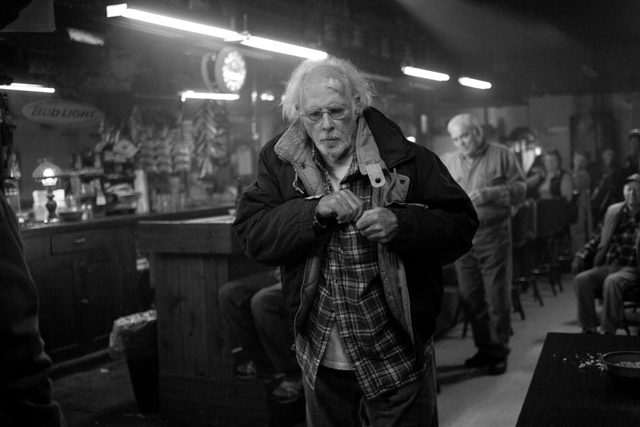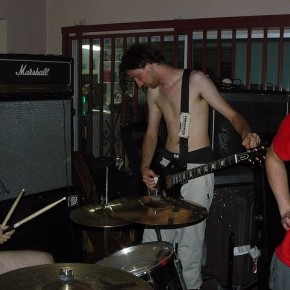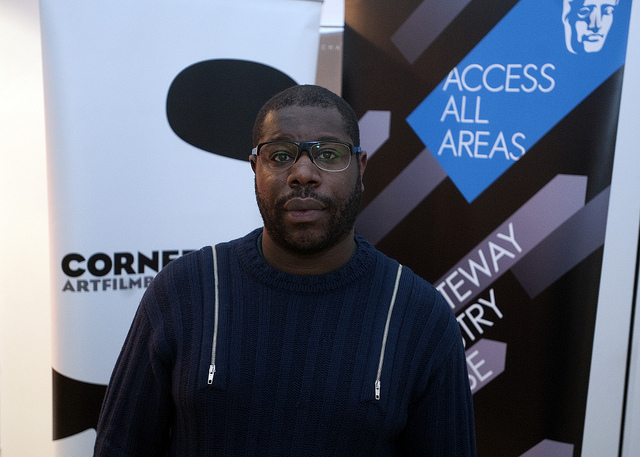As I settled into one of the few remaining seats in the packed theater, I looked up to see Peter Travers, film critic for Rolling Stone, touting the virtues of this simultaneous screening. Only a few dozen audiences around the United States would have the privilege of watching this preview of Alexander Payne’s Nebraska along with Travers and its New York-area audience.
Although it was time to put my phone away, I couldn’t resist looking up which places were members of this rather exclusive club. Not a single theater in Nebraska was listed, nor in South Dakota or Montana either. A movie lover in those states would have to make a long road trip, just like the characters in Nebraska, in order to enjoy this not-so-sneak preview. This knowledge made me feel lucky that Tucson has the wonderful Loft Theater, one of the country’s best-run independent theaters. But it also cast a shadow over my attitude towards the film before it had even started. Because however noble the intentions of Nebraska’s director and cast, this clearly seemed to be shaping up to be a case where there would be a profound disjunction between the people who watch a film and the people they watch in that film.
While this kind of voyeurism has been part of cinema since its earliest days, it has always seemed more problematic to me when practiced under the sign of realism. Very few people have dreamed of escaping to Nebraska since pioneer days. Indeed, as Nebraska makes painfully clear, a sizable percentage of its young people dream only of escaping from it.
If audiences in New York, Los Angeles, Chicago or other places with a critical mass of intelligentsia — Florida and Arizona qualify, to a degree, because of the highly educated people who retire there — watch a film set in the wide-open spaces of this “heartland”, then, it probably isn’t because they actually long to witness the place firsthand, but because they feel the need to peer through a window at that other America, that stubbornly provincial place they are only likely to notice during national elections.
At least, that’s what I was thinking during the opening minutes of Nebraska, when I was frowning both at Payne’s decision to make the picture black and white, a move that seemed both obvious — the nod to The Last Picture Show was unmistakeable — and precious, and at its vaguely folksy, NPR-friendly score. While I’d been a fan of his previous work, this new film seemed to be extrapolating from its weaknesses, not its strengths. Simply put, I thought it was trying too hard to position itself as the Little Picture That Could in the Oscar race.
I recognized that the chronically underrated Bruce Dern was giving a great performance as the befuddled Woody Grant, determined to pick up the million-dollar prize he mistakenly believes he has won; that Saturday Night Live-veteran Will Forte was doing a wonderful job of playing against type, assuming the “straight man” role as Woody’s son David; and that June Squibb was perfect as Woody’s energetically nagging wife Kate. But despite these contributions and Payne’s spot-on Midwestern mise-en-scène, the overall effect was still cloying at first.
Once I’ve indulged a negative train of thought about a film, it’s hard for me to give it a favorable review. But Nebraska eventually won me over. The key moment, to my mind, is when the father-and-son trip from Billings, Montana to Lincoln, Nebraska — the place where the prize money was supposedly going to be disbursed — is derailed by Woody’s drinking. David decides that his father might as well visit his brothers in his hometown of Hawthorne, Nebraska and arranges for Kate and his newscaster older brother Ross to meet up with them for an impromptu family reunion.
There, Woody runs into his former business partner and sometime nemesis Ed Pegram, deliciously rendered by Stacy Keach. For all the acting firepower in Nebraska, though, what makes the film work, ultimately, is the remainder of the cast, the faces we don’t recognize as actors and consequently do register as real-life residents of this small town that appears likely to pass away when Woody’s rapidly aging generation does.
Sometimes the tension between the film’s stars and its minor characters will undercut a scene, since the latter can be comically impassive. For the most part, though, the Hawthorne sequences manage to strike a delicate balance between Hollywood imperatives and the contrasting values of that other America. In effect, when the film abandons the Interstate Highway system for the back roads of the short-grass prairie, it stops speeding towards the industry telos where everything is “for your consideration” and instead lets us consider its characters in a more complex network of relations, against the backdrop of a personal history that doesn’t feel fake.
In one of my favorite scenes, Woody somewhat reluctantly accompanies his wife and sons on a visit to see the now-abandoned house where he grew up. Although Nebraska will occasionally veer towards facile sentiment, this tour of the old homestead is tough as nails. Bruce Dern does a brilliant job of communicating Woody’s mixed feelings about the place. We understand that, for all of his own faults as a father — he had a drinking problem and relied on his wife’s business for the family to make ends meet — his sons were spared the harsh realities of his own upbringing, which took place amid the deprivations of the 1930s and 40s.
At times, it seems like Payne has a mind to lionize the mixture of populism and conservatism that are identified with Woody’s generation, reminding us that they were strong because they had to be. Yet Woody himself is not particularly strong. Nor do his brothers seem to be paradigmatic survivors. While they are stoic to a fault, we get the clear impression that it was the women in their lives, like Kate, who really pulled the weight.
David is a middle-aged home electronics salesman whose girlfriend recently walked out on him. And Ross, though outwardly more successful, is still just a small-market media personality who is only anchoring the nightly news because the regular person is temporarily indisposed. Neither one, in other words, qualifies as a stirring testament to upward mobility in the postwar United States. Yet they prove to have hidden resources of humor and hope that Woody’s generation appears unable to access.
There were times, particularly towards the end of Nebraska, when I felt like the pleasantly surprised victim of a bait-and-switch operation. For it is ultimately David, not Woody or Kate, who is able to turn a bad situation into something positive. With no particular allegiance to the traditional values of a town like Hawthorne, he is able to sift through the layers of longing and resentment that define Woody’s past to find out what really matters and strike out for it. The fact that Will Forte is a native Californian, a complete outsider to the Midwestern lifestyle that Payne, Dern and Squibb know inside and out, struck me as a wry confirmation of this insight.
Sitting with an audience of transplanted New Yorkers and the odd homegrown intellectual at The Loft, I couldn’t help but return to my initial thoughts on the film. I did not experience the parasitic relation to the heartland that I had been expecting to discern, in which the audience would be inoculated against that other America by getting a small dose of it in fictional form. Instead, I found myself realizing that by not wholeheartedly endorsing the old ways, Nebraska had actually done a decent job of helping us see its subject the way Woody sees his old house.
This is a trick that Payne pulls off in his previous pictures Sideways and The Descendants, which demystify their tourism-saturated settings. In his hands, the wine country of California’s central coast and the spectacular mountains and beaches of Hawaii lose their aura of fantasy, becoming places where people cope with the same problems that beset them in less desirable locales. For him to manage this operation with Nebraska is even more impressive, though, because his audience must acknowledge that the heartland is also a spur to fantasy before any demystification can take place. Only then can we see it for what it is, rather than what we wanted it to be.
There’s a moment when the camera pans to show us the satellite dish installed at the home of Woody’s older brother. At this point, we know that the men spend their time watching football while the women converse in the kitchen, just as the stereotype would suggest. But being reminded how common this technology is, even in a shrinking small town like Hawthorne, tells us that the provincialism of its residents is the result of a choice. They don’t need to shut out the world, yet they do it anyway.
The New York Film Critics Circle preview series may not be shown in Nebraska, South Dakota or Montana, but there are plenty of other opportunities for inhabitants of those states to seek out other world views through art. To be sure, it remains ironic that Nebraska probably won’t be screened very widely in Nebraska. Whereas I started the film thinking that this might be a deal breaker, however, I came out of it delighted for the opportunity to begin thinking about the film before its official release date. Maybe the audience at The Loft and other theaters around the country does constitute a wannabe-NYC diaspora, but I’m actually more comfortable with that sort of fragmented, yet synchronized public than I ever thought I would be.
Film stills courtesy of Alexander Payne.








